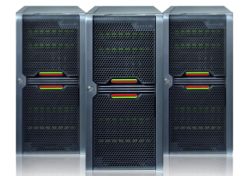How much computing power is wasted in your business?
How much computing power is wasted in your business?
This is a guest post from Integral IT, a Yorkshire IT support company.
 Relatively speaking, computers are cheap these days. You can purchase powerful servers and computers for surprisingly little money.
Relatively speaking, computers are cheap these days. You can purchase powerful servers and computers for surprisingly little money.
The thing is, most computers are used for day-to-day jobs like accessing the internet and creating presentations. And that means even the very cheapest have much more power than you're ever likely to use.
The same goes for servers, only the effect is even more pronounced. Plenty of businesses spend £1,000+ on a server, then end up using it to 10% - 20% capacity. Bonkers.
Use that power
So, there could be lots of spare computing power kicking around in your business. At first glance, it appears wasteful. But if you're about to buy even more new computer hardware, it seems crazy.
Virtualisation can help you use the spare capacity. It lets you take one computer, but split its resources (memory, disk space, processing power, etc) into several ‘virtual machines’.
Each virtual machine is like an individual computer. You can install software and use it as you wish.
Why virtualise?
When you create virtual machines, each one will have less computing capacity to call upon, because it has to share resources with other virtual machines. However, this doesn't matter if you're running everyday applications.
Here's an example. Say your main network server is running at 20% capacity. You can split it into four virtual machines, any of which can do that job - and there'll be a bit of spare capacity left, just in case.
If you're not trying to run really demanding software, virtualisation can be handy. For instance:
- Doing the job of several servers with one. You might not need separate servers for email, file storage and to run your customer database. Just create three virtual machines from one powerful server.
- Ditching desktop computers for thin clients. A thin client is little more than a keyboard and mouse which you connect to your computer network. Your staff use them as normal, but all the software runs on virtual machines at a central server.
- Running software for different operating systems. We talked about his before when we explained how to run Windows software on your Mac. You can use virtualisation to run Windows programs on your Mac, or to try Linux on your Windows computer.
The obvious upside of virtualisation is lower costs - you get more done with one piece of kit.
Getting started with virtualisation
Virtualisation isn't the easiest of technologies to get started with. Generally, you'll have to run some special software on your computer or server, so you can create virtual machines.
Common virtualisation software is provided by companies like VMWare and Citrix. However, as it can be tricky to get started with if you’re not technically minded, it's probably an idea to speak to an IT supplier.
Still, if you fancy trying virtualisation on your own computer, have a read of this guide on the Lifehacker website. Seeing it in action is a good way to get familiar with the concept, which can be a tricky one to grasp.




Comments
Add a comment